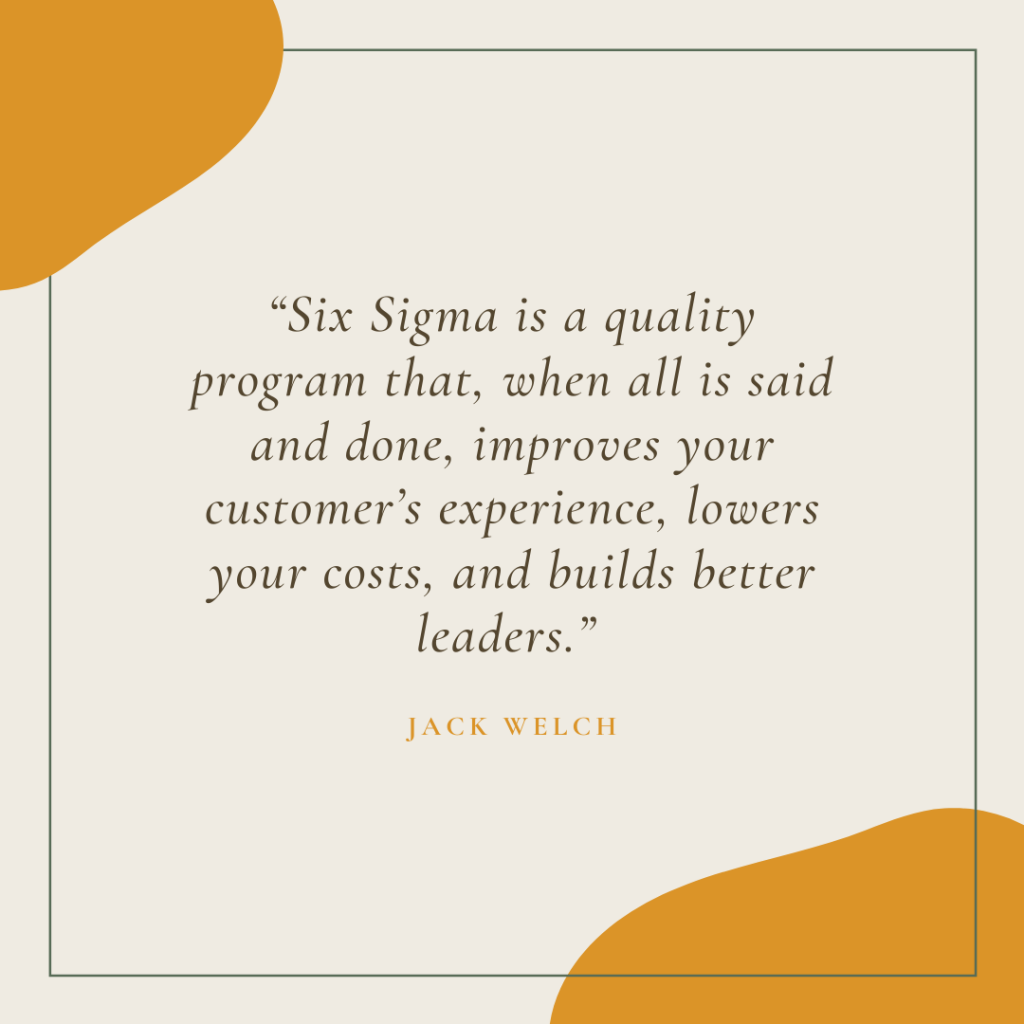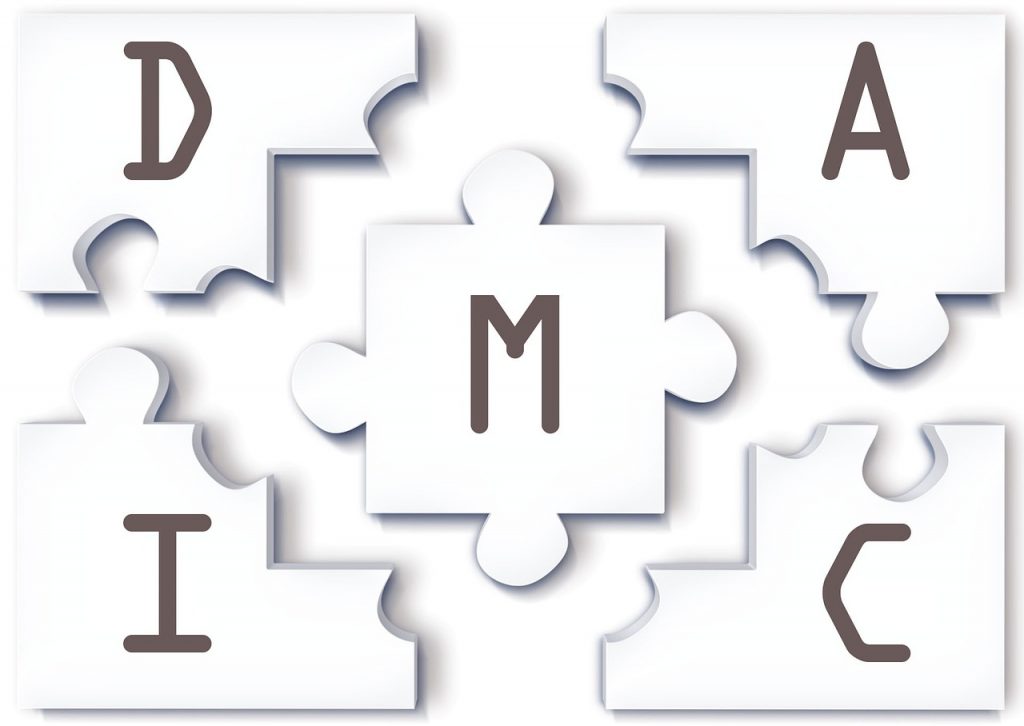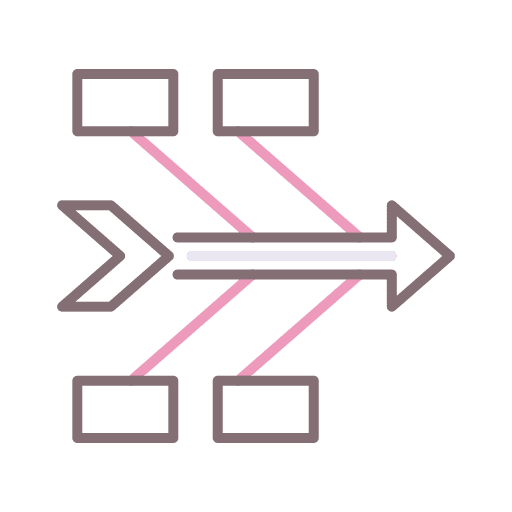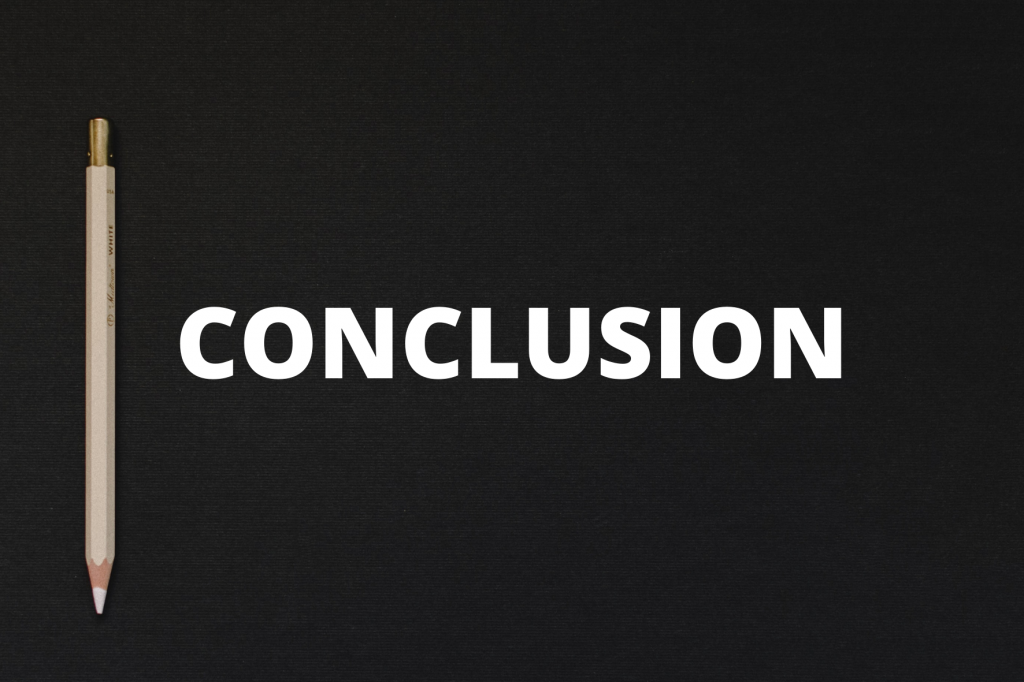Table of Contents
Introduction:
“Six Sigma is a quality program that, when all is said and done, improves your customer’s experience, lowers your costs, and builds better leaders.” — Jack Welch
Have you just completed your Six Sigma Course and planning to apply for a job?
Are you worried about what Six Sigma Interview Questions and Answers?
Lean Six Sigma Green Belt Certification Training
45-min online masterclass with skill certification on completion
Mentored By Chetan Bhagat
$99 FREE
Access Expires in 24Hrs

Upcoming Batches of Six Sigma Green Belt Certificate :-
| Batch | Mode | Price | To Enrol |
|---|---|---|---|
| Starts Every Week | Live Virtual Classroom | 19500 | ENROLL NOW |
Acing an interview is one of the vital steps before entering into the world of your desired job or even before entering into your career world.
Though it is an important part, an interviewee can successfully pass this step with adequate preparations.
One of the ingredients for acing an interview is confidence. A person with confidence in himself and his abilities holds the power to conquer the world.

Another ingredient is to know the important topics and subject matters you have learned during your learning period.
So, let us look into the Top 30 Six Sigma Interview Questions and Answers that can be asked by an interviewer and the questions that you can prepare.
Regardless that you are a Six Sigma Green Belt Certified, Six Sigma Black Belt Certified, an interviewer mostly checks the basic knowledge of a candidate.
Henry Harvin also provides these courses
Henry Harvin Provides Six Sigma Course in these Cities:
Delhi, Noida, Gurgaon, Mumbai, Chennai, Hyderabad, Kolkata, Patna, Chandigarh, Lucknow, Online
Media Coverage
Henry Harvin Ranks #1 Six Sigma Certification Course Amongst Top 5 by The Tribune, India Today, Prime Insights
Check Henry Harvin other courses:
- Lean Six Sigma Green Belt Certification
- Lean Six Sigma Black Belt Certification
- Lean Six Sigma Master Black Belt Certification
Here is a list of basic Six Sigma Interview Questions and Answers that can be asked.
Q.1. What is Six Sigma?
The first and basic Six Sigma Interview Questions and Answers that an interviewer can ask is your knowledge about Six Sigma.
In simple terms, Six Sigma is a technique that an organization uses to improve its business process and quality. Using the methodology of Six Sigma, an organization can elevate performances and decrease process variation. This in return helps a business reduce defects, ameliorate profits, increase employee morale, and improve product quality.
Q.2. Why is it called Six Sigma?
Next, the interviewer may want to know if you are aware of the use of the term Six Sigma and why is it named or called Six Sigma.
The answer to this Six Sigma Interview Questions would be that to achieve Six Sigma, the processes of an organization need to maintain their defects maximum to 3.4 defects per million opportunities (DPMO), which is otherwise difficult to attain.
Q.3. What are the two sub-methodologies of Six Sigma? Define them.
There are two sub-methodologies of Six Sigma- DMAIC AND DMADV.
DMAIC process is an acronym for Define, Measure, Analyse, Improve, and Control. This process is used for existing processes that are lacking behind the specifications and need incremental improvement.
DMADV process is an acronym for Define, Measure, Analyse, Design, and Verify. It is used to develop new processes or products that match the quality level of Six Sigma. In case a business needs more than incremental improvement, the process of DMADV can be used.

Q.4. What are the four main variations used in Six Sigma?
The four main variations used in the Six Sigma are mean, median, range, and mode.
In this, you can add how these variations function and are used in the Six Sigma process.
Q.5. What are the Five Principle of Six Sigma?
The five principles of Six Sigma are:
- Prioritizing customers’ requirements.
- Identify the deep-rooted cause for variations.
- Being proactive in reducing variation.
- Bringing people together to work as a team.
- Problem-solving through a scientific, structured, and flexible approach.
Q.6. What are various tools used in Six Sigma?
There are various tools used in Six Sigma. They are:
- Cause and effect analysis
- Pareto Chart
- Histogram
- Flow Chart
- Ishikawa diagram
- Checksheet
- Control Chart
- Scatter Plot
Q.7. Name the tool that helps in visualizing possible causes of a given problem?
The tool that helps in the visualization of possible causes of a given problem is the Ishikawa diagram.
Q.8. What are various techniques used in Six Sigma?
The various techniques used in Six Sigma are:
- The Five why’s
- Brainstorming
- Voice of the Customer
- Kaizen
- Benchmarking
- The FiveS System
- Value Stream Mapping
- Poka Yoke
Q.9. Name some of the analysis that helps to prioritize customer needs.
Kano analysis is the analysis that helps in prioritizing customers’ needs.
Q.10. What are various levels of Six Sigma?
There are seven levels of Six Sigma. They are:
- Six Sigma White Belt
- Six Sigma Yellow Belt
- Six Sigma Green Belt Certification
- Six Sigma Black Belt Certification
- Six Sigma Master Belt Certification
- Six Sigma Master Black Belt
- Six Sigma Champion
Q.11. Who are the professionals in the Six Sigma White Belt?
The White Belt is the first and beginner level of Six Sigma. The professionals who have just entered their career in Six Sigma are at the White Level of Six Sigma. The professionals who hold the White Belt of Six Sigma begin to participate in problem-solving projects. They become aware of their contribution to efficient and most reliable outcomes.
Q.12. Explain the role of Six Sigma Yellow Belt Professionals.
A Yellow Belt holder of Six Sigma is one who has known the fundamentals of the White Belt level and now works as a project team member. The professionals at this level also assist those who are at the higher levels of Six Sigma.
Q.13. What is the role of a Six Sigma Green Belt Professional?
Those who hold the Green belt of Six Sigma are the ones who have gained experience of at least 3-years working full-time. The holder of a Green Belt Six Sigma must have also completed at least one project of Six Sigma. They can also serve as a leader for simple Six Sigma projects.
Q.14. What are the various functions performed by a Six Sigma Green Belt professional?
The functions that a Green Belt holder of Six Sigma performs are reviewing and refining the project charters, organizing meetings, analyzing data, etc.
Q.15. Explain the role of Six Sigma Black Belt professionals.
Six Sigma Black Belt professionals are those who carry the experience of 3-years in full-time work. Those with the Six Sigma Black Belt certification also carry experience working on at least two projects. In their work experience, they have gained core knowledge in the area.
Q. 16. Describe the role played by a Six Sigma Master Belt professional.
Six Sigma Master Belt professionals are those who carry five years of experience in full-time employment. They have worked on a minimum of 10 projects of Six Sigma. A Six Sigma Master Black Belt holder must have trained the Green Belts and the Black Belts. Six Sigma Master Black Belt is a position of an expert who has a wide array of experience and coordinates with all the functional team.
Q.17. Who is the Six Sigma Champion? What is the role of a Six Sigma Champion?
Six Sigma Champion is the one who takes care of the political aspect of a project. Using their political skills they make sure that their projects are successful. In a corporate world, many projects come in the way of one another either economically or in terms of priority, so it is the role of a Six Sigma Champion to use their political skills and clear out the matter to make their project successful.
These are some basic questions that an interviewer may ask you to check your knowledge and also to discern your understanding of the roles and functions played at various levels of Six Sigma.
In the next set of questions, I have listed questions that an interviewer may ask concerning the projects you have worked on.
Q.18. Tell us about the project that you have worked on.
For this answer, you must describe the project and give a good insight into it. Be sure to describe your project properly as the interviewer may ask for other details concerning your project.
Q.19. What factors did you consider before starting your Six Sigma Project?
In this Six Sigma Interview Questions and Answers, list the essential factors that you must have considered before taking up the Six Sigma project. The first and foremost factor that any person takes before taking the Six Sigma project is Process Stability. Another factor can be Process Capability.
Q.20. What were the issues that you faced while working on the project and how you overcame it?
To answer these Six Sigma Interview Questions mention the problems that you must have faced during the project. Then share the ways you overcame those issues.
If you have worked on a project, then try to recall major to minor details while working on the Six Sigma project. Write down some points that are important and also some factors that are basic in Six Sigma projects. It will help you to answer interview questions concerning your project.
For the next set of questions, I have listed some Six Sigma Interview Questions and Answers concerning minor and important factors of Six Sigma. Have a look!
Q.21. What is SIPOC?
SIPOC is an acronym for Suppliers, Inputs, Process, Outputs, and Customers. This tool is used to have an overall view of all the necessary elements of the process. Before a project is started, with the help of SIPOC, a team can assess the scope of a complex project.
Q.22. Describe the Fishbone or Ishikawa Diagram.
Ishikawa diagram is a tool used to categorize various issues or failures in a project. It is named after its inventor, a Japanese professor Kaoru Ishikawa. This tool helps to understand the cause-and-effect relationship for problem-solving. The tool is also known by other names such as fishbone diagram, cause and effect diagram, and fishikawa diagram.

Q.23. Define Pareto Principle.
Pareto Principle is named after its creator Vilfredo Pareto, an economist. The principle is an 80:20 ratio which states that 80% of the consequences occur because of 20% of the cause. So, it is a cause-to-effect ratio of 80:20.
Q.24. What is the full form of DPMO or DPPM?
The full form of DPMO is Defects Per Million Opportunities.
And, full form of DPPM is Defective Parts Per Million.
Q.25. Can you list one difference between Cpk and Ppk?
Cpk is about Process Capability, predicting whether the process will meet specifications or not.
Whereas, Ppk is about Process Performance, in which a company is able to assess how well a process performed in long term.
Q.26. Who developed Six Sigma and when?
Six Sigma was developed by Motorola in 1986.
Q.27. Name the developers of Six Sigma.
Six Sigma was developed by Mikel Harry and Bill Smith to improve the manufacturing process.
Q.28. What do you understand by Regression Analysis and what is the use of this analysis?
Regression analysis helps to establish the relationship between the output variable (Y) and input variables (X).
Q.29. Explain quality levels of Six Sigma.
Quality levels of Six Sigma is a technique used to monitor and measure process quality. At every level of Six Sigma, a number of defects per million opportunities are defined. The perfect level of sigma is attained at 3.4 defects per million opportunities (DPMO).
The levels of Six Sigma defects per million opportunities are:
- 6,90,000
- 3,08,537
- 66,807
- 6,210
- 233
- 3.4
Q.30. What do you understand by FMEA?
FMEA is abbreviated for Failure Mode and Effect Analysis. This analysis is used to identify possible risks within the process, design, or product. After identifying the possible risk, one can develop a risk mitigation plan to overcome these risks.
Conclusion:

Here, I have tried to provide commonly asked questions during an interview but then again understand that the topic of Six Sigma is wide so an interviewer can ask anything. For this I advise you to flick through the notes you must have prepared during your Six Sigma course or read articles about Six Sigma.
Apart from asking Six Sigma Interview Questions and Answers, an interviewer asks any interviewee to give an introduction of himself or herself. For this, I suggest you write down the points that you want to highlight in your introduction and practice saying them before a mirror. This exercise will help you to correct your posture and facial expressions mostly noted by an interviewer. Dress formally when you have an interview. For men, an interview attire can be a formal shirt and pants; a neat hairstyle; and formal shoes. For women, wear either a plain single-colored suit or a formal skirt with a formal shirt complemented with light makeup.
I wish you All the Best in your interview!
Below I have listed some helpful articles about Six Sigma, Lean Six Sigma, and more. I recommend you to read through these articles as well.
Check For More Relevant Articles: https://reviewsreporter.com
Recommended Reads:
- Best Six Sigma Course in India
- Best Six Sigma Courses in Bangalore
- Best Six Sigma Black Belt Courses in Delhi
- Best Six Sigma Courses in Chennai
FAQs:

Ans. Henry Harvin Education is an institute from where you can learn Six Sigma and Lean Sigma courses. Henry Harvin instituted is Ranked no. 1 by India Today, The Tribune, and Business Standard for Six Sigma certification.
Ans. Lean Six Sigma is a blend of two individual specializations of Lean and Six Sigma. It is the best problem-solving approach that helps an organization to achieve its goal and satisfy customers.
Ans. There are four belts in Lean Six Sigma. They are:
1. Yellow Belt
2. Green Belt
3. Black Belt
4. Master Black Belt
Ans. The career opportunities that a Six Sigma professional can opt for are:
a. Manufacturing Engineers.
b. Six Sigma Analyst
c. Six Sigma Consultant
d. Functional Project Lead
e. Six Sigma Projects Manager and others.
Recommended Programs
Lean Six Sigma Green Belt
Certification Training
Ranked No.1 Six Sigma Certification in India | Aligned to IASSC Book of Knowledge | Combining Lean and DMAIC Methodology to Impart Key Skills | Gain Experience of 12+ Projects | Both Classroom and Live Online Options Available
Lean Six Sigma Black Belt
Certification Training
Ranked No.1 Six Sigma Black Belt Certification in India | 9361+ Participants Trained | Aligned to IASSC Book of Knowledge (BOK) | Gain Advanced Expertise Over Lean and Six Sigma Methodology| Gain Experience of 12+ Projects | Both Classroom and Live Online Options Available
Lean Six Sigma Master
Black Belt Certification
Step-in to a new designation of being Explicit Quality Professional | Get acknowledged as a Lean Six Sigma Evangelist | Connect to the rarest community of worldwide Black Belt specialists | Validate your professional skills in leading intricate projects | Execute Lean methodologies with perfection.
Explore Popular CategoryRecommended videos for you
E&ICT IIT Guwahati Best Six Sigma Green Belt Program
Ranks Amongst Top #5 Upskilling Courses of all time in 2021 by India Today
View Course






![Top 7 Technical Skills For Career in Biotechnology in 2024 [Updated]](https://hh-certificates.sgp1.digitaloceanspaces.com/blog/wp-content/uploads/2020/05/03101316/7575fa69-8f6e-4665-ad73-ea7c2182d05c-270x180.png)

![Top 11 Key Accountant Resume Skills in 2024 [Updated]](https://hh-certificates.sgp1.digitaloceanspaces.com/blog/wp-content/uploads/2022/06/17130428/pasted-image-0-2022-10-17T183415.434-270x180.jpg)
.webp)
